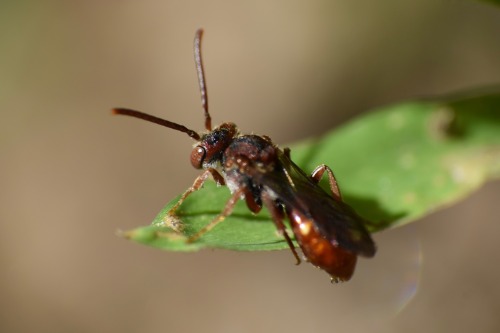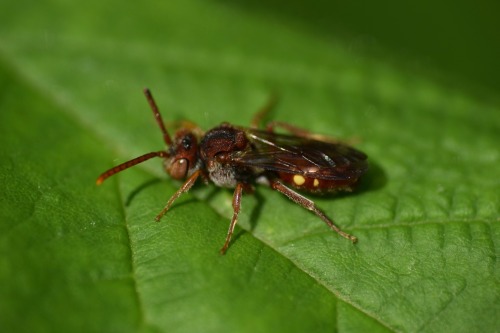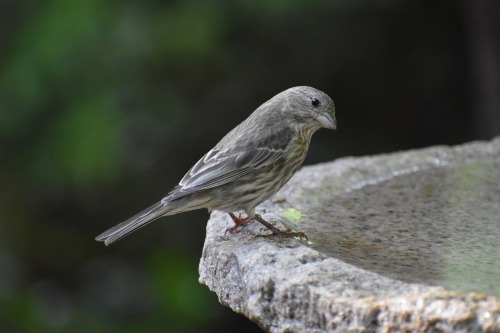Northern Mockingbird (Mimus Polyglottos), Juvenile, Taken May 9, 2025, In Georgia, US



Northern Mockingbird (Mimus polyglottos), juvenile, taken May 9, 2025, in Georgia, US
A young mockingbird eating like an absolute weirdo from the woodpecker feeder! This newly-independent teen could barely fit on the feeder ledge and kept almost falling off. Apparently the taste was worth it, though, because it kept trying! I can tell this is a juvenile because it's smaller and leaner than its parents, and they also never eat from this feeder due to the inconvenience. They prefer the easy to access barn feeders that are accessible to everyone, but this little guy hasn't figured out the tech yet—or maybe they haven't figured out his!
More Posts from Northerlyy and Others


Stretch Spiders (Genus Tetragnatha), female (top) and male (bottom), taken July 7, 2024, in New Hampshire, US
This pair was set up under the awning of a dock lamp. It was an extremely effective setup, seeing as I had to hang out over the water on my stomach and put the life of my phone at risk to get pictures lol! In the top photo, there's a good view of the horrifically large fangs of this genus, while the male on the bottom is showing off his lovely gold coloration! He's a catch!


Northern Cardinal (Cardinalis cardinalis), male, taken February 25, 2025, in Georgia, US
Bald!!!!! The spring molt has taken him... Every spring all of the cardinals become bald, and it is both pathetic and wonderful. This guy has started a bit early, so he's the odd man out of the bunch until they all follow!
What they don’t tell you about getting into bird watching is that once you get into it, you do not get to decide when you bird watch. You can be on the beach of some distant tropical country with nothing planned except relaxing. But then you see a Common Fluttering Nut Buster and you’re like fuckkkkkkkk holy shit guys the Common Fluttering Nut Buster is not supposed to life this far west holy shitttttttttt


Sawfly (Genus Dolerus), taken March 7, 2025, in Georgia, US
'Tis the season for sawflies! I've only seen two so far, but more are certainly to come. This guy was quite striking, being bright red! Until now, I've only seen black sawflies in person, so I actually thought this was some kind of blood bee (Genus Sphecodes) until I put it into iNat lol! However, if you look closer, you can tell that the body is almost fully red, the antennae are not elbowed, and the head isn't really bee-shaped. What a cool find! Here's to hoping I see more!


Fowler's Toad (Anaxyrus fowleri), taken April 4, 2025, in Georgia, US
Toads have begun to emerge from their slumber! Many are likely making their way to my koi pond, where they'll deposit thousands of eggs and screw up the water balance... I love them regardless, because getting to see them frolicking around the pond is fun lol. Lifting the filter cover and seeing toads swirling around is not fun, but they're usually okay!




Nomad Bees (Genus Nomada), taken May 5, 2025, in Georgia, US
Some little red bees! These guys are always super busy unless, of course, they're sleeping like in the third image! Yesterday the bees were quite gracious with their landing times, sitting still long enough for me to actually press the shutter button lol. Normally, they're flying around constantly, searching for the burrows of other bees to lay their eggs in!




Globular Springtails (Order Symphypleona), taken March 20, 2025, in Georgia, US
In order of appearance: Ptenothrix curvilineata (1), undescribed Dicyrtoma sp. (2), Ptenothrix marmorata (3), undescribed/unknown Ptenothrix sp. (4)
I've been in a globular springtail phase for a couple months now, and the past few days I've been doubling down in my efforts to find as many as possible. I spent a couple hours yesterday digging through dead wood and found and photographed 40 individuals! I love the diversity of patterning in this group—they're absolutely tiny, but so so gorgeous.
P. marmorata is definitely the most common customer in my part of the woods, but I found lots of the 4th individual as well. That guy is a bit of a strange situation, since it might actually be a regional color morph variant of P. marmorata! It doesn't look much like it, but animals are weird and this stuff happens sometimes. Hopefully we find out what it is soon!

Orchard Orbweaver (Leucauge venusta), juvenile, taken March 18, 2025, in Georgia, US
Behold, a spider belly! In even the smallest orchard orbweaver, the orange smiley on their abdomen is visible. This is diagnostic for the species, along with 3 stripes that run down their cephalothorax, one down the center and 2 on the margins, but that isn't visible here. Those markings allow you to differentiate the species from Joro Spiders, which look extremely similar as juveniles. A smiliar species, the Mabel Orchard Orbweaver (Leucauge argyrobapta), is often confused with this one but can be distinguished (if not by range) by its blue hues and larger, more yellow smiley. This is only the case for some individuals, though, as females of the species are nearly identical and males can only be distinguished by the shape of their palps. Both are beautiful regardless!


House Finch (Haemorhous mexicanus), female, taken April 30, 2025, in Georgia, US
Miss Finch getting a refreshing sip of the newly-replaced bird bath water! Her husband was waiting in an adjacent tree, and they flew off together afterwards. Either they or another house finch pair returned later with 2 babies which sat on the feeder and screamed while their parents got food. It is officially time for babies to leave the nest!

Blue Dasher (Pachydiplax longipennis), male, taken April 13, 2025, in Georgia, US
My first dasher of the year! I found several species of odonates at this pond bank. There were dozens of dragonflies and damselflies zipping about, though this guy made the best picture by far. I love how this species sits—they pose excellently for photos!
-
 a1-1976 liked this · 1 week ago
a1-1976 liked this · 1 week ago -
 vankerworld liked this · 1 week ago
vankerworld liked this · 1 week ago -
 twigsandvines liked this · 1 week ago
twigsandvines liked this · 1 week ago -
 misgtd-blog liked this · 2 weeks ago
misgtd-blog liked this · 2 weeks ago -
 irlydidntthinkthisthru reblogged this · 2 weeks ago
irlydidntthinkthisthru reblogged this · 2 weeks ago -
 rishievil liked this · 2 weeks ago
rishievil liked this · 2 weeks ago -
 longbird47 liked this · 2 weeks ago
longbird47 liked this · 2 weeks ago -
 basilba reblogged this · 2 weeks ago
basilba reblogged this · 2 weeks ago -
 ravensvalley liked this · 2 weeks ago
ravensvalley liked this · 2 weeks ago -
 davy-jones-yaoi liked this · 2 weeks ago
davy-jones-yaoi liked this · 2 weeks ago -
 partialsun liked this · 2 weeks ago
partialsun liked this · 2 weeks ago -
 staticspxcelover liked this · 2 weeks ago
staticspxcelover liked this · 2 weeks ago -
 lithraea liked this · 2 weeks ago
lithraea liked this · 2 weeks ago -
 locomalparido liked this · 2 weeks ago
locomalparido liked this · 2 weeks ago -
 fruitgogurt reblogged this · 2 weeks ago
fruitgogurt reblogged this · 2 weeks ago -
 fruitgogurt liked this · 2 weeks ago
fruitgogurt liked this · 2 weeks ago -
 sunnymoth liked this · 2 weeks ago
sunnymoth liked this · 2 weeks ago -
 a-swoop-of-swallows liked this · 2 weeks ago
a-swoop-of-swallows liked this · 2 weeks ago -
 texnsolid liked this · 2 weeks ago
texnsolid liked this · 2 weeks ago -
 sylphidium liked this · 2 weeks ago
sylphidium liked this · 2 weeks ago -
 alcnfr liked this · 2 weeks ago
alcnfr liked this · 2 weeks ago -
 northerlyy reblogged this · 2 weeks ago
northerlyy reblogged this · 2 weeks ago

Wildlife photography of all kinds in no particular chronological order... call me North!All photos posted are taken by me, and everything that appears here is documented on iNaturalist as well.
242 posts